Statics of Rigid Bodies
Engineering Mechanics is the field that deals with how forces affect the motion or rest of objects. Statics, in particular, is the study of bodies that do not accelerate, either because they are at rest or moving at a constant velocity.
Force and Force Systems
What is a Force System?
A force system refers to a set of forces acting on a body. It can be a single force or multiple forces acting together. Each one has three key elements: magnitude, direction, and point of application.
Newton summarized how forces interact through three fundamental laws:
- First Law: A body will remain at rest, or keep moving in a straight line at constant speed, unless acted on by an external force. This is the principle of equilibrium.
- Second Law: The change in momentum of a body is proportional to the applied force and occurs in the direction of that force.
- Third Law: For every action, there is an equal and opposite reaction along the same line of action.
Understanding Force System Classifications
Coplanar
Coplanar: All forces lie on the same plane. This is usually assumed in statics problems.
Non-Coplanar
Non-coplanar: Forces act in three-dimensional space, often seen in dynamic or mechanical systems.
Concurrent Forces

All the force lines pass through a single point, commonly found in trusses and cable systems.
Non-concurrent Forces

The force lines do not intersect at a common point, which creates moments or rotational effects.
Parallel Forces
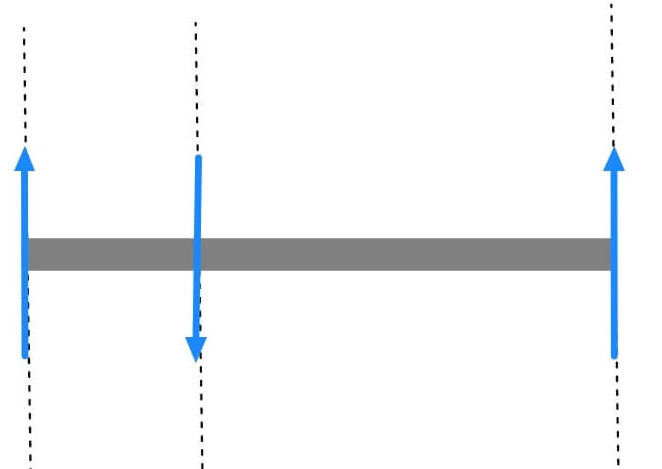
Forces are aligned in the same or opposite directions but do not intersect.
Resultant Force
Example 1 : Find the resultant
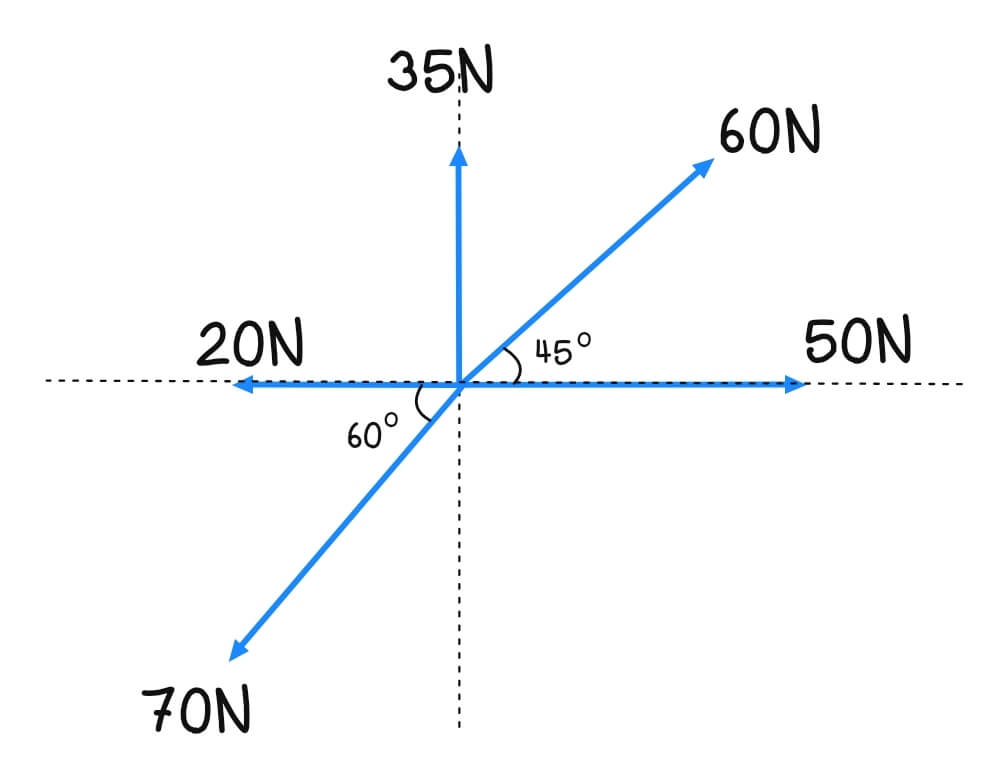
![]()
![]()
![]()
![]()
![]()
R = 41.03 N
![]()
![]()
Example 2 : Find the resultant
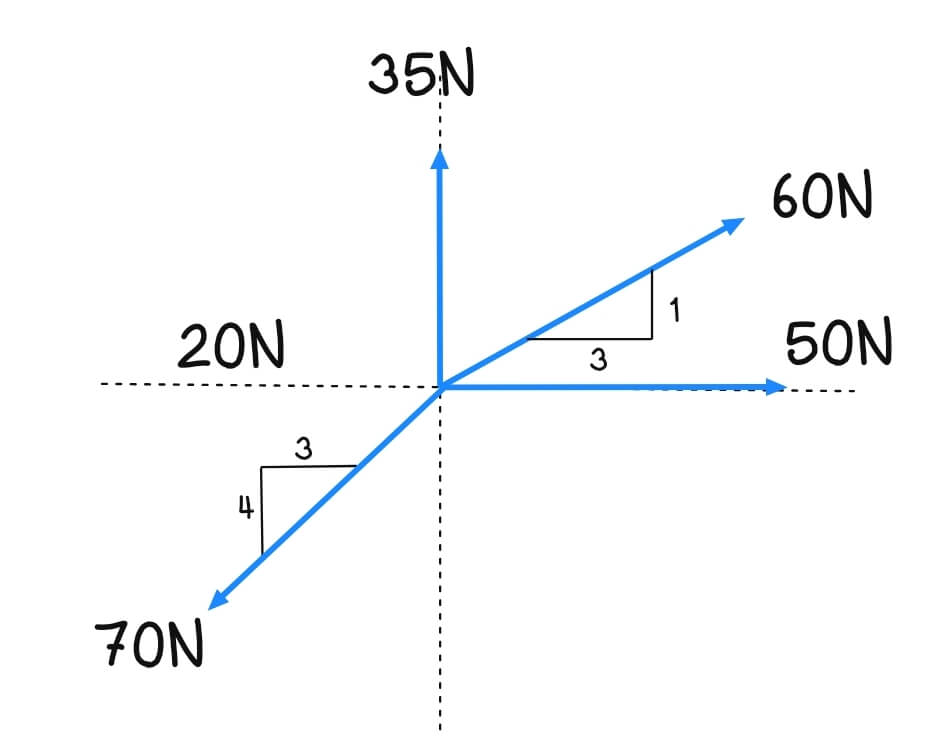
![]()
![]()
![]()
![]()
![]()
R = 41.03 N
![]()
![]()
Another way to solve Resultant is via Triangle Law
Triangle Law
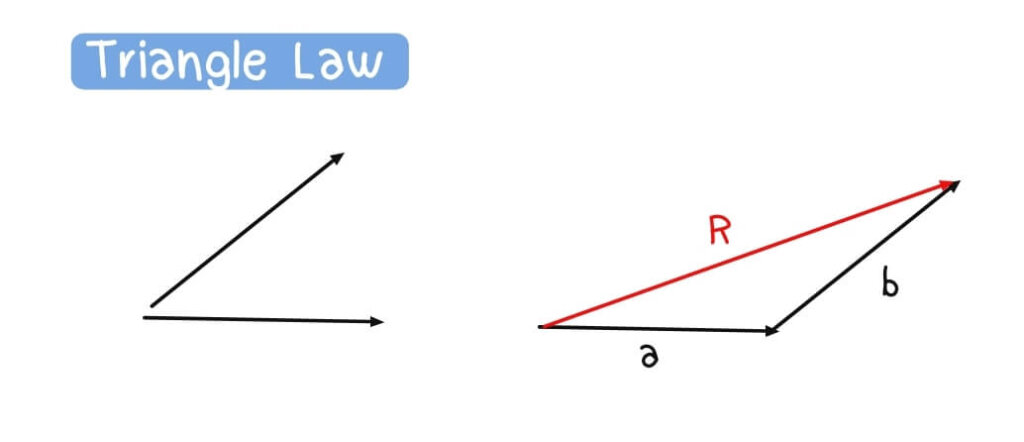
In Triangle Law, you must remember these two laws:
Cosine Law
![]()
![]()
![]()
Sine Law
![]()
Example 3 : Solve the resultant using Triangle Law
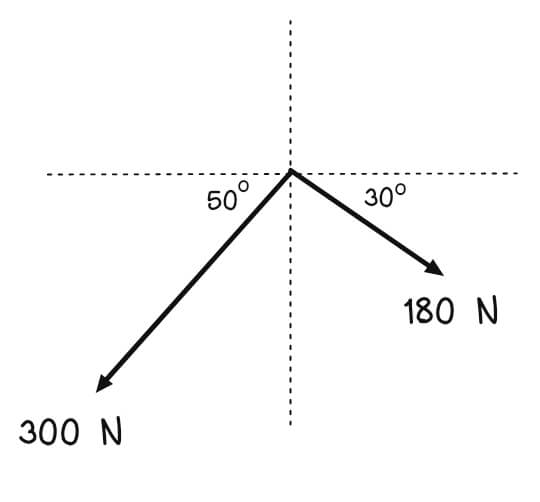
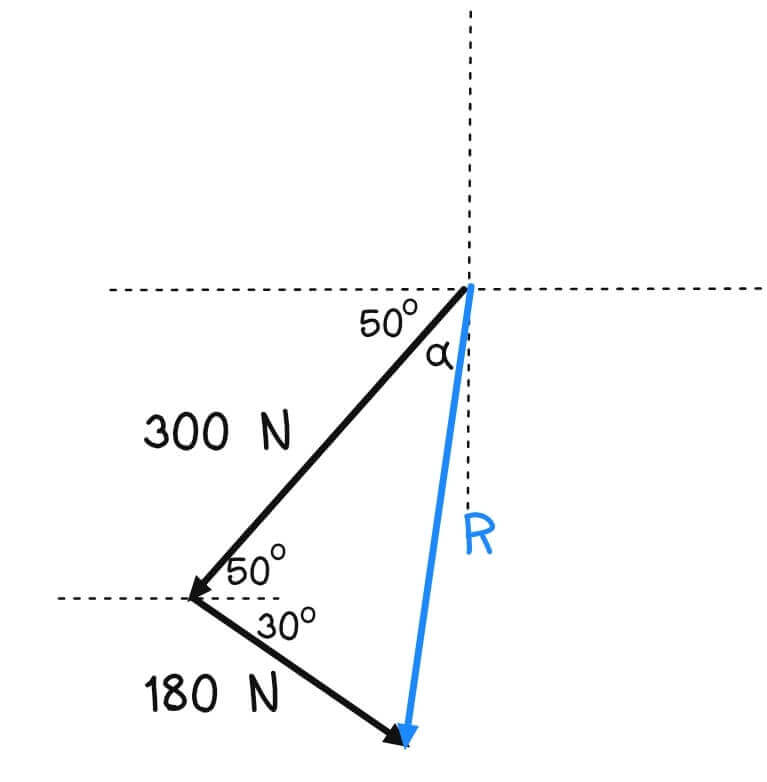
Solution: For Magnitude
Use Cosine Law
![]()
![]()
R = 321.94 N
For Angle
Use Sine Law
![]()
![]()
![]()
Frequently Asked Questions (FAQs)
What are the characteristics of s Force?
Point of Application – Where the force is applied on the body.
Direction – The angle or orientation of the force.
Magnitude – The size or strength of the force, usually in kN or N.




